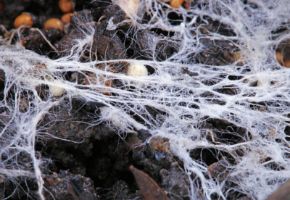In a world changing at unprecedented rates, the kingdom of fungi represents a sensitive thermometer of ongoing transformations. Often overlooked in the climate change debate, these organisms are undergoing profound mutations that are reshaping entire ecosystems.
Fungi constitute one of the fundamental pillars of life on Earth: their role as decomposers, symbionts, and ecological indicators makes them essential for understanding the effects of global warming. Recent studies show that fungal communities are responding to climate change more rapidly than many plant and animal species, with cascading consequences on forests, nutrient cycles, and even the climate itself.
The impact of climate change on wild mushrooms
Seasoned mushroom foragers confirm it: traditional calendars are no longer reliable. Climate changes are rewriting the rules of fungal growth, with effects that go far beyond simple seasonal shifts.
The phenological revolution: when fungi change their clocks
Fungal phenology - the study of timing in appearance and development - is undergoing dramatic alterations. A decade-long analysis by the British Mycological Society revealed that:
- 78% of studied species are appearing earlier (on average 12 days sooner than 30 years ago)
- 15% have developed a second autumn fruiting period
- Only 7% maintain unchanged seasonal cycles
Particularly significant is the case of Boletus edulis (porcini) in Central Europe, where the growing season has lengthened by 35 days between 1980 and 2020, according to data published in Nature Climate Change.
Fungal migrations: the new mycological geography
The geographical distribution of species is experiencing unprecedented shifts. Joint research from the University of Helsinki and the Royal Botanic Gardens, Kew documented:
| Species | Altitudinal shift | Latitudinal shift |
|---|---|---|
| Cantharellus cibarius | +150m | 55 km northward |
| Lactarius deliciosus | +80m | 42 km northward |
| Amanita caesarea | +200m | 68 km northward |
This data reveals a concerning phenomenon: many species cannot migrate fast enough to keep pace with the shifting of ideal climate conditions, leading to localized declines.
The mycorrhizal emergency: when symbiosis falters
The symbiotic relationships between fungi and plants, developed over millions of years of coevolution, are undergoing unprecedented stress. This silent crisis threatens the very stability of forest ecosystems.
Mycorrhizal networks under stress
Mycorrhizae - the complex associations between fungal hyphae and plant roots - are showing signs of deterioration in many regions worldwide. A five-year study published in Science highlighted that:
- In boreal forests, nutrient exchange efficiency has decreased by 22-27%
- In Mediterranean regions, mycorrhizal species diversity has dropped by 18%
- In some tropical areas, up to 40% of associations show signs of instability
As explained by Dr. Markus Fischer from the University of Bern: "We are observing a true 'climatic dissociation' between plants and fungi that had cooperated perfectly for millennia".
Domino effects on forest ecosystems
The consequences of these alterations are profound and multidimensional:
- Reduced tree growth: Lower nutrient absorption (-15-30% according to FAO data)
- Increased mortality: Especially in young plants (-25% survival rate)
- Altered carbon cycles: Reduced CO₂ sequestration (-0.5-1.2 tons/hectare/year)
The FAO estimates that these dynamics could reduce global forest productivity by 10-15% by 2050.
Fungal cultivation in the climate change era
The mushroom cultivation sector faces unprecedented challenges, forcing a rethinking of techniques established for decades. But new opportunities are also emerging from the crisis.
New challenges for growers
Traditional climate parameters are becoming increasingly unreliable. A survey by the International Society for Mushroom Science of 300 European businesses found:
- +35% in climate control costs
- +20% summer production failures
- 15% more pathogen contaminations
Particularly affected are button mushrooms (Agaricus bisporus), which show a 12-18% yield reduction for each degree Celsius above 25°C during incubation.
Emerging species and innovative adaptations
Facing these challenges, the sector is demonstrating remarkable resilience by adopting various strategies:
Promising new species
- Pleurotus eryngii (tolerates up to 32°C)
- Ganoderma lucidum (adaptable to variable humidity)
- Hericium erinaceus (resistant to thermal fluctuations)
Innovative technologies
- Geothermal cooling systems
- Waste-resistant substrates
- IoT parameter monitoring
According to ResearchGate, these innovations could potentially increase global sector productivity by 5-8% despite adverse climate conditions.
Climate change: the keyword is flexibility
Fungi are sending us clear signals: climate change isn't a future threat, but a reality already transforming the underground world of hyphae and mycelium.
As highlighted in the recent IPCC report on biological system impacts, fungi represent both victims and potential solvers of the climate crisis. Their adaptability and metabolic versatility offer hope for:
- New bioremediation methods
- Regenerative agriculture systems
- Sustainable protein alternatives
The challenge for mycologists, foragers, and growers will be learning to navigate this new era of climate instability, transforming threats into opportunities for knowledge, innovation, and change.
The fungal kingdom is a universe in continuous evolution, with new scientific discoveries emerging every year about their extraordinary benefits for gut health and overall well-being. From now on, when you see a mushroom, you will no longer think only of its taste or appearance, but of all the therapeutic potential it holds in its fibers and bioactive compounds. ✉️ Stay connected - Subscribe to our newsletter to receive the latest studies on: Nature offers us extraordinary tools to take care of our health. Fungi, with their unique balance between nutrition and medicine, represent a fascinating frontier we are only beginning to explore. Continue to follow us to discover how these extraordinary organisms can transform your approach to well-being.Continue your journey into the world of fungi










